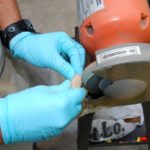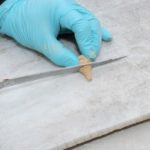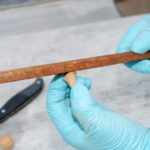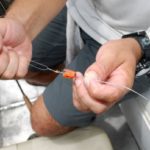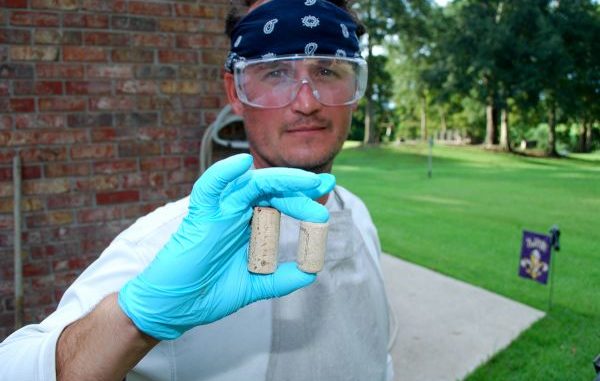
Rhett Buteau, like many other dedicated sac-a-lait fishermen, has had trouble buying fishing corks made of real cork in recent years.
So, finding foam corks unsuitable, he began making his own from recycled wine bottle corks.
“I get friends with good taste to save their wine bottle corks,” Buteau grinned. “The corks stenciled ‘Napa Valley’ are the best; they are compressed tighter and don’t fall apart or chip.”
Learning to make corks that will slowly sink with 1/32-ounce jigs is easy, he said.
Just keep a bucket of water and some line on a jig handy, and test the cork for buoyancy as it is ground down.
After making a few, sizing them becomes almost instinctive.
Here are the steps:
1) Select a good cork — The one on the right is better than the other because it has a tighter grain and is more resistant to breaking and chipping. Notice that Buteau wears eye protection to keep grinding debris from getting in his eyes.
2) Use a bench grinder to grind one end of the cork into a flat-tipped cone.
3) With a sharp knife, cut the cone off the rest of the cork.
4) Finish shaping the cork by hand with a file or fine wood rasp.
5) Insert a piece of a round toothpick in the center of the large end of the cork and spray paint the cork with fluorescent orange or other high-visibility paint.
6) Use a needle made of fine stiff wire to pull the line through the cork. After the line is threaded through the cork, peg it in place with a piece of round toothpick.

